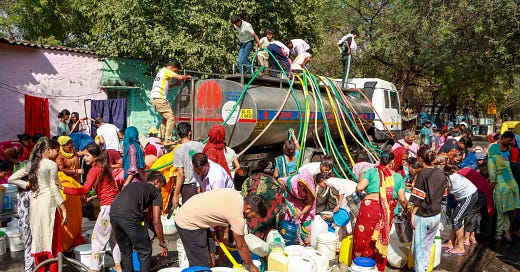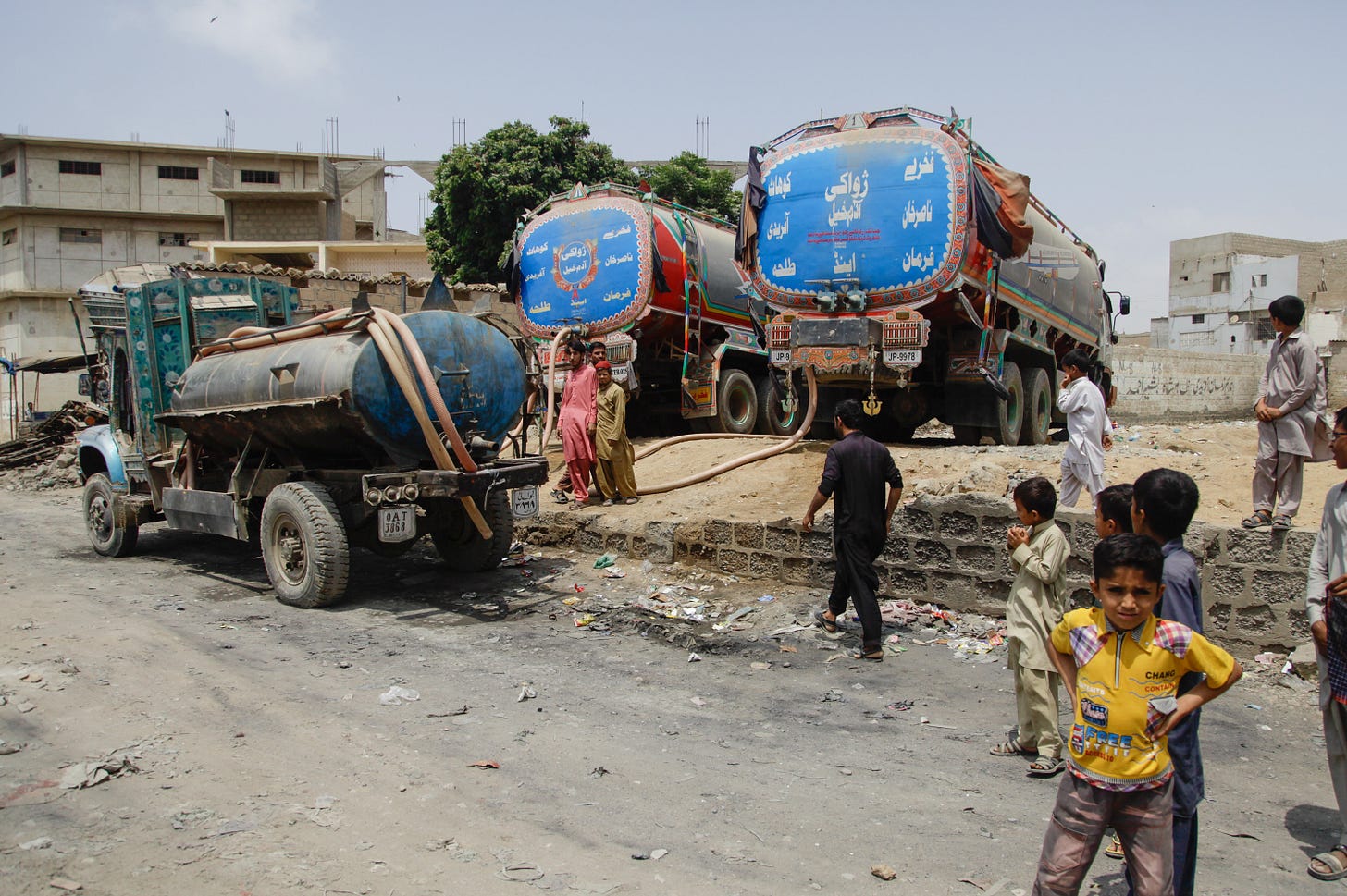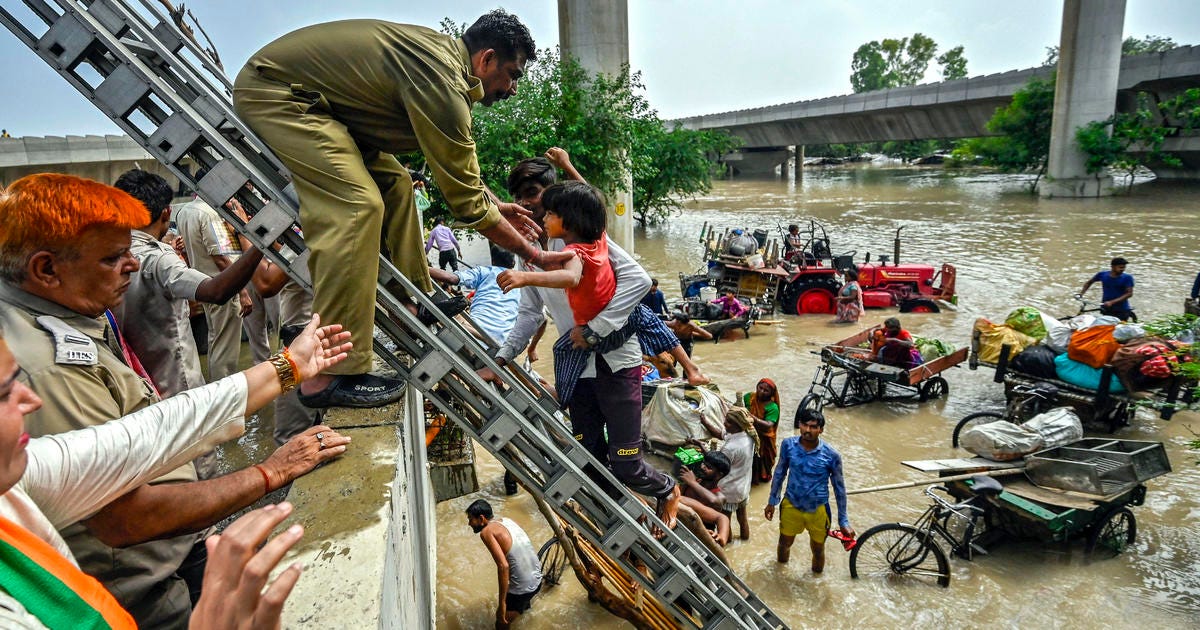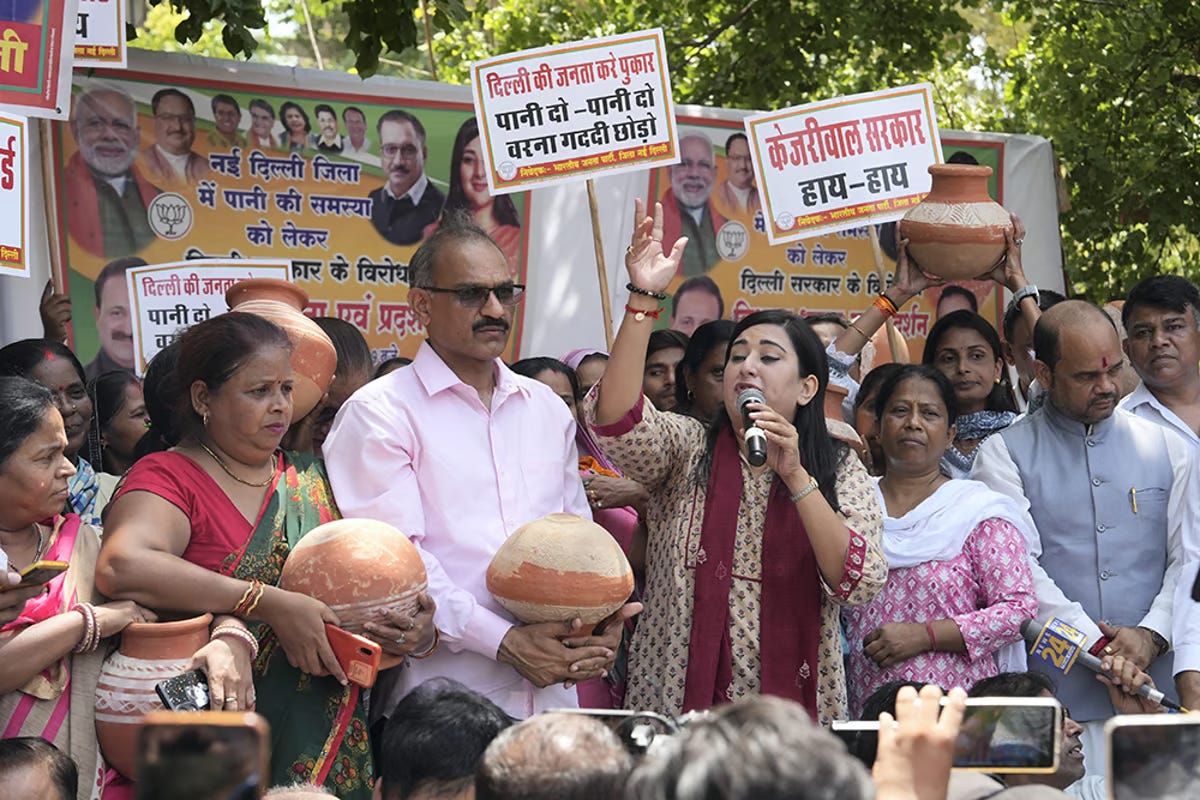The Delhi Water Crisis: A Multi-Faceted Challenge
Political Will, Funding, Public Participation, DJB Improvement, and Interstate Cooperation Essential; Supreme Court and Jal Shakti Ministry Have No Magic Wand.
A Looming Crisis: Delhi's Water Shortage
Delhi, India's capital, is facing a severe water crisis with a shortfall of around 70 million gallons per day (MGD) as of June 2024. This has been exacerbated by an unprecedented heatwave, with temperatures hovering in the mid-forties and barely any torrential showers to cool things down. People look to the heavens for the monsoons, which may still be a few weeks away. While summer water shortages in Delhi are not new, the current crisis, on the verge of an emergency, is perhaps the worst seen in many years.
This article comprehensively explores the reasons behind the crisis, the role of the Delhi Jal Board (DJB), and potential solutions. The discussion aims to pinpoint accountability while providing a holistic view of the challenges and possible measures.
Reasons for the Water Crisis
a.) Insufficient Raw Water Supply
Delhi's water production has dropped from 1,002 MGD to 932 MGD mainly due to reduced supply from the Munak canal and Wazirabad reservoir. This decrease of a mere 7% has exacerbated the city's already strained water resources but it cannot be regarded as the sole cause of the current crisis. The malaise perhaps runs far deeper, involving issues such as over-extraction of groundwater, pollution of water sources, rapid population growth, and the impacts of climate change.
b.) Over-Extraction of Groundwater
The DJB has significantly increased groundwater extraction from 86 MGD in 2020 to 135 MGD in 2024. While this move addresses the misconception that the DJB has not been augmenting its indigenous water sources, this over-reliance on groundwater is unsustainable and contributes to the depletion of this vital resource. Given the highly urbanised surface of Delhi, groundwater cannot be effectively recharged even during a healthy monsoon season.
c.) Pollution of Water Sources
The Yamuna River, a major water source for Delhi, is heavily polluted, with 80% of its contamination attributed to the city itself. This pollution hampers the usability of the river's water. Common effluent treatment plants and sewage treatment plants have either been ineffective or not properly maintained. Ambitious schemes like the "Yamuna Action Plan" appear to have been more on paper or part of political rhetoric than concrete actions leading to measurable improvements in the pollution levels of the Yamuna, which ultimately joins the Ganges, India's holy river.
d.) Population Growth and Climate Change
Delhi's population has surged from 16.7 million in 2011 to an estimated 24 million in 2018. This rapid growth places immense pressure on limited water resources. Additionally, the ongoing heatwave conditions, exacerbated by climate change, have worsened the crisis. However, the lack of proper management and maintenance is something that cannot be brushed aside.
The Role of Delhi Jal Board
a.) Responsibilities and Challenges
The DJB is responsible for producing and distributing drinking water in Delhi. It operates nine water treatment plants with a total capacity of around 1,000 MGD and manages approximately 5,000 tubewells. As a result of these efforts, about 93% of households have access to piped water, though the quality and quantity vary significantly. Nevertheless, these efforts have clearly not been sufficient, as evidenced by this year's unprecedented water crisis.
b.) Water Tariffs
The DJB provides 20,000 liters of free water per month to households with domestic metered connections. Consumption above this limit is charged at increasing rates, with additional sewer maintenance charges, at 60% of the water charges. This pricing structure aims to encourage conservation but also presents challenges in revenue generation for necessary infrastructure improvements.
Statutory Requirements and Delays in DJB Audits
a.) Mandated Audits by CAG
The accounts of the Delhi Jal Board (DJB) are statutorily mandated to be audited by the Comptroller and Auditor General of India (CAG). According to Section 19(3) of the CAG (Duties, Power and Conditions of Services) Act, and Sections 69 and 70 of the DJB Act, DJB is required to maintain proper accounts and records, which must be audited annually by the CAG.
b.) Significant Delays and Irregularities
However, significant delays and irregularities have plagued the auditing process in recent years. As of December 2023, DJB's accounts had only been audited up to March 31, 2018, and the performance audit was completed only up to March 31, 2022. Notably, DJB has failed to deposit its accounts with the CAG since 2015, and the accounts submitted in 2021 were deemed unreliable. The CAG audit report for 2017-18, which was recently shared with the Delhi Government, highlighted alleged discrepancies and irregularities, including a reported loss discrepancy of over Rs 6,500 crore.
Steps Taken and Ongoing Accountability Issues
a.) Government and Court Interventions
In response to these issues, the Delhi Government and DJB have taken steps to address the auditing delays and irregularities. In December 2023, Chief Minister Arvind Kejriwal ordered a CAG audit of DJB accounts for the past 15 years to investigate the allegations. Additionally, the Delhi High Court directed the CAG in February 2024 to promptly audit DJB's accounts from 2018-19 to 2020-21. DJB has prepared the annual accounts for 2018-19 and 2019-20 and plans to submit them to the CAG after approval.
b.) Persistent Accountability Concerns
However, questions about accountability and responsibility persist. The Delhi Government's finance department has averred that despite receiving over Rs 28,400 crore since 2015-16, DJB— essentially a techno-bureaucratic organisation— lacks accountability and has not utilised the funds according to sanction conditions. The Finance Secretary has called for an examination of DJB's conduct due to the delay in CAG audits. While the Delhi Government has promised strict action if discrepancies are found, specific accountability has yet to be established. Ensuring timely audits and transparent disclosure of DJB's accounts is crucial for maintaining financial integrity and efficiency in Delhi's water management. However, this is merely a necessary condition, not a sufficient one—efficient running of the water extraction, purification, and distribution networks continues to be crucial.
Sources of Water
External and Internal Sources
Delhi's water supply relies on external sources from neighboring states and internal groundwater extraction. The Yamuna River contributes 40%, the Ganga River 25%, Bhakra Storage 22%, and groundwater 13%. The dependence on these sources underscores the need for robust inter-state cooperation and sustainable groundwater management.
Haryana's Water Supply to Delhi
Inter-State Agreements and Current Issues
Haryana is obligated to release a share of Yamuna water to Delhi. However, recent reductions in supply through the Munak Canal have led to tensions. Delhi has appealed for additional water on humanitarian grounds, highlighting the need for improved inter-state water management agreements.
Immediate Solutions
a.) Additional Water Release
The Delhi Government has sought urgent directives from the Supreme Court for neighboring states to release additional water. This temporary measure aims to alleviate the immediate shortage. Additionally, from a political perspective, it is seen by some observers as sending twin messages: that the crisis is due to Haryana’s obdurate non-cooperation and that the Delhi Government is leaving no stone unturned to alleviate this crisis.
b.) Crackdown on Water Misuse
Inspection teams have been authorized to fine offenders for water misuse, such as washing cars with hoses or allowing tanks to overflow. These measures are intended to curb wastage during the crisis.
c.) Equitable Water Rationing
Implementing water rationing strategies during peak crises ensures fair distribution across all areas, rather than prioritizing VIP zones. This approach promotes equity and social justice.
The Tanker Mafia
a.) An “Underground” Water Network
The "tanker mafia" refers to an informal network of private water tanker operators who illegally extract groundwater and sell it at high prices to water-starved areas in Delhi. This underground network operates a parallel private water supply chain, particularly in regions neglected by the Delhi Jal Board (DJB), the government water utility. The mafia allegedly involves a nexus of local politicians, thugs, and even some DJB officials who facilitate these illegal operations.
They extract water from illegal borewells and store it in underground tanks, from where it is sold through tankers with capacities ranging from 1,000 to 2,000 gallons. These operators charge exorbitant rates, exploiting the desperation of water-starved communities, with prices reaching up to Rs. 1400 for 6,000 liters. The tanker mafia has thrived due to the DJB's failure to provide adequate piped water supply to large parts of Delhi, especially as the city's water supply falls short by over 160 million gallons per day during peak summer.
b.) Efforts to Tackle the Tanker Mafia
Amid the ongoing severe water crisis in Delhi, the tanker mafia has come under increased scrutiny. The Delhi Government and the Supreme Court are taking steps to crack down on their operations. The Delhi Government has informed the Supreme Court that the tanker mafia operates from the Haryana side, making it challenging to take action due to jurisdictional issues. Water Minister Atishi has alleged that senior Delhi Government officials may be colluding with the tanker mafia to create an artificial scarcity and has sought an inquiry into the matter. The Supreme Court has questioned the Delhi Government on the steps taken against the tanker mafia and warned that the Delhi Police would intervene if the government fails to act.
The Delhi Government has deployed special teams of district officials to inspect the main water supply network and prevent leakages and water theft. Despite some police raids on illegal borewells and tanker filling stations, the mafia is known to resume operations quickly. Experts argue that simply cracking down on the tanker mafia is not enough to solve Delhi's water crisis. Addressing fundamental issues like upgrading the city's water infrastructure, improving water resource management, and ensuring equitable supply to all areas is crucial. Political parties like the BJP and Congress have also been protesting against the AAP government, alleging failure to tackle the tanker mafia and ensure adequate water supply. With the water crisis becoming a major political issue, it remains to be seen if the government can take concrete steps to dismantle the tanker mafia's operations and provide relief to suffering citizens.
The Monsoon Paradox: Abundance and Scarcity
a.) Overwhelming Floods
The recent monsoon season in Delhi has brought forth a cruel irony, reminiscent of Samuel Taylor Coleridge's famous line from "The Rime of the Ancient Mariner": "Water, water, everywhere, / Nor any drop to drink." The relentless rains and the overflowing Yamuna River have submerged vast swathes of the city, forcing thousands of residents to flee their homes and seek shelter on higher ground. The floodwaters have swallowed up roads, parks, and even the Chief Minister's residence, bringing the bustling metropolis to a standstill. Yet, amidst this deluge, the city faces a dire shortage of potable water, as three water treatment plants have been shut down due to the flooding. The taps have run dry, leaving millions of residents parched and desperate, even as they wade through waist-deep water.
b.) A Dystopian Reality
The situation is a stark reminder of how climate change and unplanned urbanization can conspire to create a dystopian reality, where the very element that sustains life becomes a source of destruction and scarcity. As Delhi grapples with this unprecedented crisis, Coleridge's words echo hauntingly across the centuries, a grim prophecy of a world where water, the most precious resource, is both a blessing and a curse.
Medium-Term Solutions
a.) Infrastructure Upgrades
Investing in the maintenance and upgrade of water treatment plants, pipelines, and sewerage networks is crucial. Resolving funding conflicts and clearing pending payments to contractors will enhance the DJB's operational efficiency.
b.) Groundwater Management
Stricter regulations and monitoring are required to prevent over-extraction and unauthorized use of groundwater. Implementing groundwater recharge measures and conducting aquifer mapping can help sustain this resource.
c.) Wastewater Treatment and Reuse
Expanding the sewer network and promoting the use of treated wastewater for non-potable purposes, such as construction and agriculture, can reduce the burden on freshwater sources.
Long-Term Solutions
a.) Integrated Water Management Planning
The Delhi Master Plan should prioritize sustainable water management, focusing on reducing reliance on external sources, promoting rainwater harvesting, and enhancing wastewater recycling. Land-use planning should align with water availability.
b.) Inter-State Cooperation
Resolving water-sharing disputes with neighboring states and ensuring adherence to agreements is essential for long-term water security. Projects like the Renuka Dam can help utilize monsoon flows effectively.
c.) Citizen Awareness and Participation
Promoting responsible water consumption, mandatory rainwater harvesting, and community engagement in water conservation efforts can significantly aid in managing water resources sustainably.
d.) Climate Change Adaptation
Investing in climate-resilient water infrastructure, flood control measures, and preparedness for extreme weather events is crucial for Delhi's future water security in a changing climate.
A Former Delhi Jal Board CEO's Perspective: Addressing Delhi's Water Crisis
a.) Issues with Water Use and Distribution
Ramesh Negi, a retired 1984-batch IAS officer and our batchmate, spoke exclusively to us about the complexities of managing Delhi's water resources. One of the most pressing issues he observed was the lack of responsible water use across all segments of society. The elite, often the biggest culprits, misused the free 20,000 liters provided per month, especially in multifloor kothis, while both the rich and poor suffered and voiced their frustrations when shortages arose. The disparity in water distribution was stark, with planned areas receiving 70 to 100 liters per capita per day (lpcd), while unplanned areas received a mere 20 to 40 liters. In peak summer, exacerbated by climate change, this situation became even more critical.
b.) Need for Behavioral and Systemic Changes
Negi, who had worked as the CEO of DJB for a number of years in the government of Sheila Dikshit, emphasized the need for a shift in community behaviour towards water use efficiency. Examples like Jordan, where water is supplied only three days a week, highlighted the potential for disciplined usage. Additionally, the solution lay in reducing theft and leakage through Public-Private Partnerships (PPP). The DJB's experiments in this regard had shown promise. For instance, the new airport initially requested 15 MGD but was allocated only 0.5 MGD, prompting the adoption of water conservation techniques. Furthermore, any new construction over 500 square meters now required recirculating water systems, a policy that should be strictly enforced.
c.) A Holistic Approach for the Future
“Ultimately, addressing Delhi's water crisis effectively requires a holistic approach involving community engagement, strict regulation, calibrated PPP and innovative management and conservation methods,” Negi concluded.
Conclusion: Accountability and the Path Forward
a.) Immediate and Long-Term Solutions
Addressing Delhi's complex water crisis requires more than just quick fixes or political manoeuvring. The Delhi Jal Board (DJB) must be held accountable for its management shortcomings, as mere increases in water supply from Haryana or elsewhere will not suffice if the maintenance and management of the water distribution system are not up to the mark. While the AAP Government in the NCT of Delhi might try to deflect responsibility, it cannot escape scrutiny for its role in this crisis. The incarceration of Delhi CM Arvind Kejriwal may have contributed to administrative challenges, but the malaise runs far deeper.
b.) Holistic Approach Required
A holistic solution is required, one that involves immediate relief measures, medium-term infrastructural and regulatory interventions, and long-term integrated planning with stakeholder cooperation. The Union Jal Shakti Ministry and the Supreme Court of India do not possess a magic wand to conjure water supply out of nothing. Water is a precious resource, and relying on quick fixes is both literally and metaphorically costly.
c.) Sustained Efforts for a Water-Resilient Future
Sustained political will, adequate funding, and public participation are essential to secure a water-resilient future for Delhi. The DJB must improve its management, but a broader cooperative and strategic approach is vital for sustainable solutions. Only through joint efforts and comprehensive planning can Delhi hope to overcome its water crisis and ensure a reliable supply for all its residents.
A Call to Action: Addressing India's Water Crisis
It's a matter of shame that the national capital is facing such a severe water crisis. As India marches ahead in the comity of nations, the crisis in Delhi is more highlighted due to national press and media coverage, but similar problems also exist in other metropolitan cities like Bengaluru and Hyderabad. In pursuance of the Prime Minister's clarion call for a Viksit Bharat by 2027, ensuring a clean and reliable water supply to the people of India, whether in urban or rural areas, not merely in metros, is imperative. Moreover, this situation can turn into a humanitarian crisis, and now is not the time to play politics or indulge in blame games. The time to act is now—for all stakeholders to come together jointly and in good faith to address and resolve this critical issue.
If you believe this article would interest someone you know, please feel free to share it anonymously (for us), using any platform that you prefer.








